The question of whether homosexuality is related to various bad things is independent of one’s stance towards homosexuals as citizens, their rights to marriage etc. which is fine by me.
Given some recent tweets about the penile response of a large, clinical sample of men to various stimuli, there was some Twitter speculation that homosexuality and pedophilia were linked. Tara McCarthy asked me to look into the matter, so I took a quick look. This is not meant to be exhaustive.
Homosexuality
I have previously shown (never formally published, not even a preprint, but there’s an R notebook) that there is a general sexual kink or deviance factor, meaning that interest in any kink/paraphilia increases the likelihood that someone is interested in any other kink, no matter which pair is chosen. I was unfortunately unable to confirm this finding in larger samples (requests for data had no reply), but the factor loadings are shown below. I analyzed the data by sex because I had the correlation matrix for both sexes, and because it was plausible that the relationships between the interest may differ by sex (i.e. interaction). However, the pattern was roughly the same:
Pedophilia is included but with a relatively low loading: about .30 for women and .45 for men. These differences may reflect chance. The sample size was large-ish at n=1226, about 2/3 female. If one assumes independent correlations, the p value for the test of different correlations is .03 (using psych::paired.r) which is not overwhelming. The low loading of some items is not due to variance bias effects as all measures were based on a composite score of 32 of 7-point items.
Another way to think about it is to think of interests in these kinks as deviance from normal/natural sexual preferences (heterosexual vaginal). In this fashion, both pedophilia and homosexuality are deviances and would thus per the general factor interpretation be expected to be correlated. However, we don’t need to trust theory here because there’s a bunch of studies on the topic:
Since gays only constitute some 3%ish percent of men, but constitute 27% of this offender sample, there does seem to be a rather strong link (RR = 900%). Bisexuals are also very over-represented. The sample is quite large at n=991 and is based on archival data for convicted offenders.
Objective. To determine if recognizably homosexual adults are frequently accused of the sexual molestation of children.
Design. Chart review of medical records of children evaluated for sexual abuse.
Setting. Child sexual abuse clinic at a regional children’s hospital.
Patients. Patients were 352 children (276 girls and 76 boys) referred to a subspecialty clinic for the evaluation of suspected child sexual abuse. Mean age was 6.1 years (range, 7 months to 17 years).
Data collected. Charts were reviewed to determine the relationships of the children to the alleged offender, the sex of the offender, and whether or not the alleged offender was reported to be gay, lesbian, or bisexual.
Results. Abuse was ruled out in 35 cases. Seventy-four children were allegedly abused by other children and teenagers less than 18 years old. In 9 cases, an offender could not be identified. In the remaining 269 cases, two offenders were identified as being gay or lesbian. In 82% of cases (222/269), the alleged offender was a heterosexual partner of a close relative of the child. Using the data from our study, the 95% confidence limits, of the risk children would identify recognizably homosexual adults as the potential abuser, are from 0% to 3.1%. These limits are within current estimates of the prevalence of homosexuality in the general community.
Conclusions. The children in the group studied were unlikely to have been molested by identifiably gay or lesbian people.
Thus, it found approximately nothing using a different approach.
A random sample of 175 males convicted of sexual assault against children was screened with reference to their adult sexual orientation and the sex of their victims. The sample divided fairly evenly into two groups based on whether they were sexually fixated exclusively on children or had regressed from peer relationships. Female children were victimized nearly twice as often as male children. All regressed offenders, whether their victims were male or female children, were heterosexual in their adult orientation. There were no examples of regression to child victims among peer-oriented, homosexual males. The possibility emerges that homosexuality and homosexual pedophilia may be mutually exclusive and that the adult heterosexual male constitutes a greater risk to the underage child than does the adult homosexual male.
Also about null, at least in the authors’ interpretation. Though I note that it is a bit weird that they find them all to be heterosexual in adult orientation, while male children were about 33% of the targets. Note that the first study above used the sex of the victims to define the sexual orientation, while this one did not.
Described as:
“This dataset included measures taken with the same laboratory method used by Freund et al., namely, phallometric testing. Phallometric testing (sometimes called penile plethysmography) is an objective technique for assessing erotic interests in men. In phallometric tests for gender and age orientation, the individual’s penile blood volume is monitored while he is presented with a standardized sequence of laboratory stimuli depicting male and female children and adults. Increases in the patient’s penile blood volume (i.e., degrees of penile erection) are used as the measure of his attraction to different classes of persons.”
In other words, sex researchers studying these men strap a device over the subjects’ penises to measure how swollen or flaccid their penises become in response to various kinds of pictures and audiotapes. The idea is that, the more erect the penis, the more the man has been stimulated by the particular sexual material being presented to him. Blanchard further describes the subject population of his recent study:
“The subjects were 2,278 male patients referred to a specialty clinic for phallometric assessment of their erotic preferences. All underwent the same test, which measured their penile responses to six classes of stimuli: prepubescent girls, pubescent girls, adult women, prepubescent boys, pubescent boys, and adult men. The stimuli were not, of course, live persons, but rather audiotaped narratives describing sexual interactions with prepubescent girls, pubescent girls, and so on. These narratives were accompanied by slides showing nude models who corresponded in age and gender to the topic of the narrative. The slides did not show the models doing anything sexual or even suggestive but rather resembled photographic illustrations of physical maturation in a medical textbook.”
So, the prediction from the model here would be that homosexuals should have an elevated young age response. The figure looks like this.
They look quite mirrored. Given the absence of the sample sizes, one cannot really infer anything about the homosexuality x pedophilia link. I was unable to find the actual study (link was dead).
All in all, there does seem to be a link.
The differential psychology of sexual offenders
While looking for the above studies, I stumbled upon some other interesting studies:
The EPQ and a lifestyle questionnaire were completed by 77 members of the Paedophile Information Exchange (PIE), a self-help club for men who are sexually attracted to children. Compared with control males the paedophiles were significantly introverted and high on P and N. Examination of individual items revealed that PIE members were more likely to be shy, sensitive, lonely, depressed and humourless, but they were not particularly troubled by guilt, obsessionality or worry about their looks. Individual variations within the paedophile sample were also found. Those who were high on P and low on E were interested in younger children and were less able to contemplate sex with adults. Paedophiles high on N were less happy about their sexual preference and were more likely to have sought treatment.
A sample of 473 male patients with pedophilia (assessed by the patients’ sexual history and penile response in the laboratory to standardized, erotic stimuli) or other problematic sexual interests or behaviors received brief neuropsychological assessments. Neuropsychological measures included a short form of the Wechsler Adult Intelligence Scale–Revised (D. Wechsler, 1981), the Hopkins Verbal Learning Test–Revised (R. H. B. Benedict, D. Schretlen. L. Groninger. & J. Brandt, 1998), the Brief Visuospatial Memory Test–Revised (R. H. B. Benedict, 1997), and the Edinburgh Handedness Inventory (S. M. Williams, 1986). Pedophilia showed significant negative correlations with IQ and immediate and delayed recall memory. Pedophilia was also related to non-right-handedness even after covarying age and IQ. These results suggest that pedophilia is linked to early neurodevelopmental perturbations. (PsycINFO Database Record (c) 2016 APA, all rights reserved)
We also have from the Blanchard study above:
And from a later study:
The samples overlap somewhat I think. Still, there does seem to be an age of interest x IQ interaction, consistent with a kind of wicked (one-way) assortative mating. Dull men are cognitive more like children, and the more dull, the closer to the mental level of children they are, and would thus be better able to bond with them.
Blanchard summarizes his account in his paper:
The Neurodevelopmental Hypothesis of Pedophilia
Building on clinical and systematic observations going back more than a century (e.g., von Krafft-Ebing 1965 ), Blanchard et al. ( 2002 ) hypothesized that neurodevelopmental problems in prenatal life or early childhood increase the risk of pedophilia in males. If this hypothesis is correct, then pedophiles should show other signs of perturbed neurodevelopment. Two such signs are of special interest, because both are associated with a very wide range of neurodevelopmental insults or stresses. The first such sign is poor cognitive function (or lower than expected IQ). The evidence that poor cognitive function can result from a variety of adverse neurodevelopmental events or conditions includes several lines of research. First, acquired neurologic damage during infancy or early childhood has profound and long-lasting cognitive effects. This has been demonstrated among children with brain tumors (Radcliffe et al. 1994 ), traumatic brain injury (Taylor et al. 1999 ), intracranial hemorrhage (Dennis and Barnes 1994 ), perinatal hypoxia (Gottfried 1973 ), and epilepsy (Neyens et al. 1999 ). Second, exposure to neurotoxic substances, either in utero or early in postnatal development, can have similar robust effects on cognition. Such effects have been associated with several teratogenic substances including lead (Needleman et al. 1990 ), coumarins (Wesseling et al. 2001 ), alcohol (Olson et al. 1998 ), and tobacco (Frydman 1996 ). Third, genetic disorders, with known adverse neurobiological effects, have also been connected with low cog- nitive functioning. For example, children with fragile X syndrome (Fisch et al. 1996 ), velocardiofacial syndrome (Kozma 1998 ), and Down syndrome (Hayes and Batshaw 1993 ) typically demonstrate significant intellectual impairment. The second nonspecific sign of neurodevelopmental problems in utero is non-right- handedness (i.e., left-handedness, or substantial use of both hands for common tasks, especially writing). Non-right-handedness occurs 1.5 – 3.0 times more frequently in populations with any of several neurological disorders. Such disorders include Down Syndrome (e.g., Batheja and McManus 1985 ), epilepsy (e.g., Schachter et al. 1995 ), autism (e.g., Soper et al. 1986 ), learning disabilities and dyslexia (e.g., Cornish and McManus 1996 ), and mental retardation (e.g., Grouios et al. 1999 ). Elevated levels of non-right-handedness have also been shown to be associated with biological stresses occurring pre- and perinatally, achieving frequencies of non-right-handedness compa- rable to those in the aforementioned pervasive developmental disorders (e.g., Searleman et al. 1988 ). Such pre- and perinatal stressors include premature birth (e.g., Marlow et al. 1989 ;Rossetal. 1992 ), twinning and multiple births (e.g., Coren 1994 ;Davis and Annett 1994 ; Williams et al. 1992 ), and low birth weight (e.g., O ’ Callaghan et al. 1987 ; Powls et al. 1996 ). It must be stressed that Blanchard et al. ( 2002 ) did not hypothesize that poor cognitive functioning (or non-right-handedness) causes pedophilia. They predicted, rather, that pedophilia will correlate with poor cognitive functioning and non-right- handedness if neurodevelopmental problems predispose a male to develop all three. They also did not hypothesize that neurodevelopmental problems are the only causes of pedophilia — simply that they contribute to the risk of this disorder.Empirical Findings on Pedophilia, IQ, and Handedness
For several years, we have been testing predictions from the hypothesis of Blanchard et al. ( 2000 ) in an ongoing research program. The main published studies are presented here. In the most comprehensive individual investigation of IQ in pedophiles published to date, Cantor et al. ( 2004 ) examined a heterogeneous group of 454 men undergoing clinical assessment for various sexual offenses or problematic interests. The sexological variables included the patients ’ numbers of victims in each of several age groups, their numbers of consenting adult sexual partners, and their penile responses in the laboratory to standardized stimuli depicting males and females of various ages (i.e., phallometric test results). Analyses revealed lower IQ scores to be related to greater numbers of child victims, and higher IQ scores to be related to greater numbers of consenting, adult sexual partners. Similarly, lower IQ scores were associated with greater phallometric responses to sexual stimuli involving children, and higher IQ scores were associated with greater responses to stimuli involving adults. The subjects also demonstrated significant group differences in IQ when trichotomized on the basis of their phallometric test results into pedophiles, hebephiles, and teleiophiles. The mean IQs of these groups were 89.5, 93.7, and 97.8, respectively. It should be noted that the pedophiles ’ mean IQ was not in the mentally retarded range, but it was two-thirds of a standard deviation lower than the population mean of 100. The findings of Cantor et al. ( 2004 ) were supported by a subsequent meta-analysis of IQ data in sex offenders (Cantor et al. 2005a ). This study, among other things, compared the IQ scores of 56 samples of adult sexual offenders against children (3,187 individuals), 8 samples of sexual offenders against adults (302 individuals), and 53 samples of nonsexual offenders (16,222 men convicted of nonsexual crimes). The sexual offenders against children had significantly lower IQs than the nonsexual offenders; the sexual offenders against adults were intermediate. Cantor et al. ( 2005a ) also found that the mean IQs of samples of sexual offenders against children were related to the criterion used for defining the offender ’ svictimasa child: For example, the mean IQs from samples of men who offended against victims age 13 or younger were lower than the IQs from samples of men who offended against victims age 17 or younger. The relation between handedness and pedophilia has been examined in three published studies. The first relevant data were produced by Bogaert ( 2001 ). He found a slightly but significantly higher rate of non-right-handedness in a sample of sexual offenders against (unrelated) children under age 12 compared with a sample of controls. Bogaert ’ s finding was confirmed by Cantor et al. ( 2004 ) and Cantor et al. ( 2005b ), who assessed pedophilic interest with more extensive offense-history data than was available to Bogaert and also with phallometric testing. Cantor et al. ( 2005b ) found that the rate of non-right-handedness in pedophilic men was nearly triple that in teleiophilic men.
If we accept the common cause of this involves developmental instability, it is not clear whether the cause is merely genetic confounding (there’s always genetic confounding, fifth law). But if the maternal age is causal, it doesn’t bode well for the future since maternal age is increasing in conjunction with the dysgenic effects and dysfertility. If it’s not a genetic effect, it means genetic engineering and selection won’t be so effective.
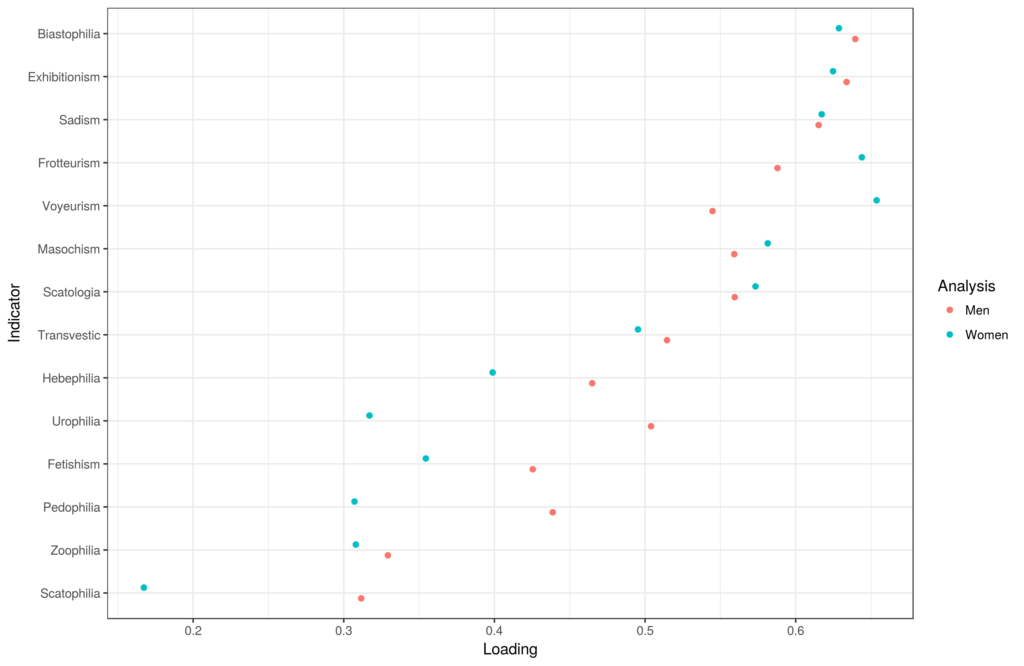
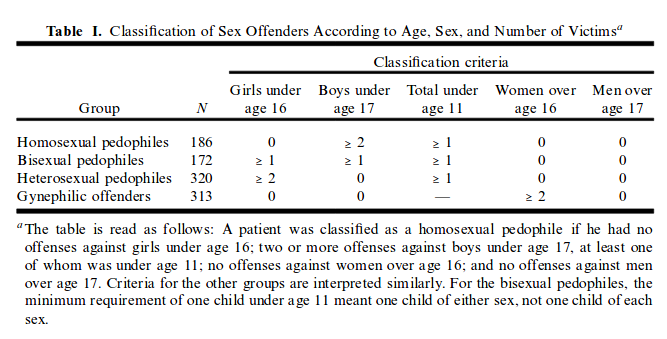

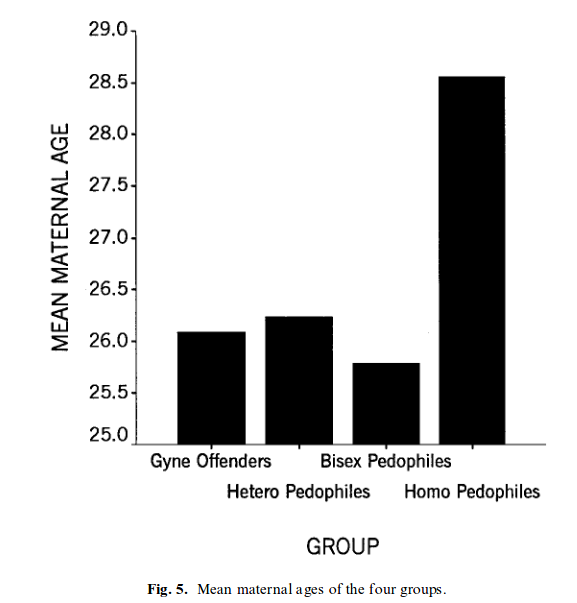
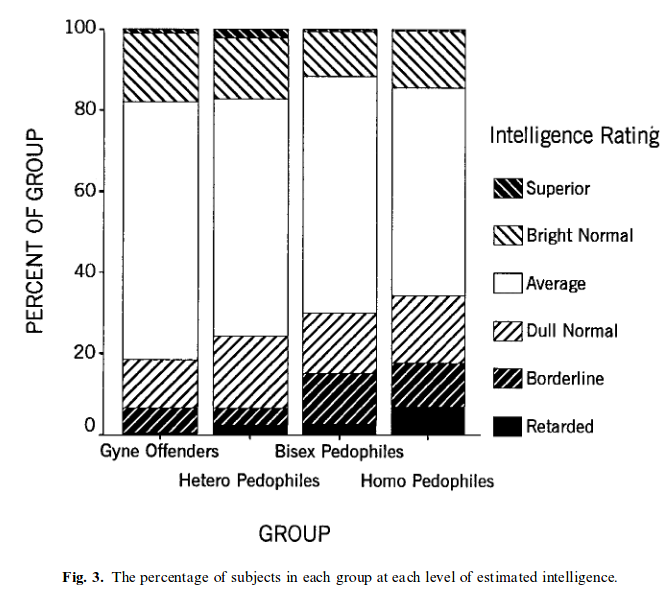
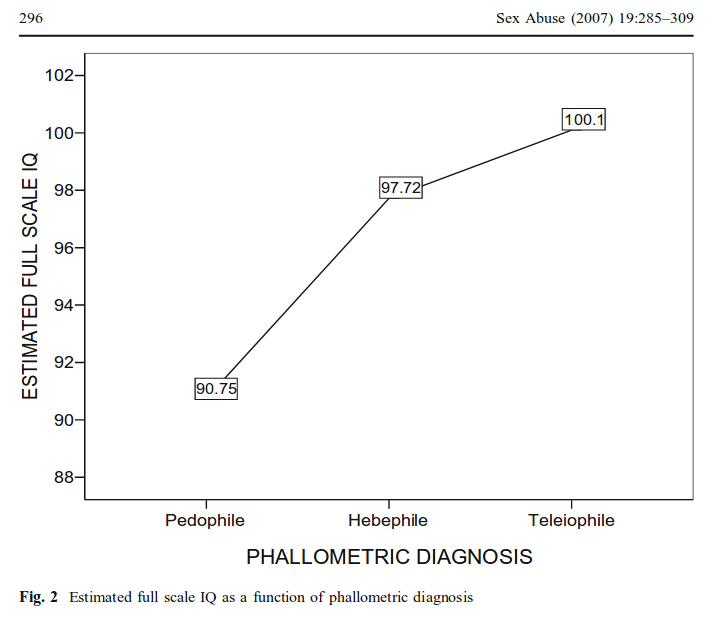

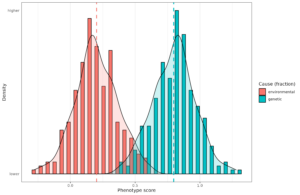
Excellent summary, very helpful analysis.